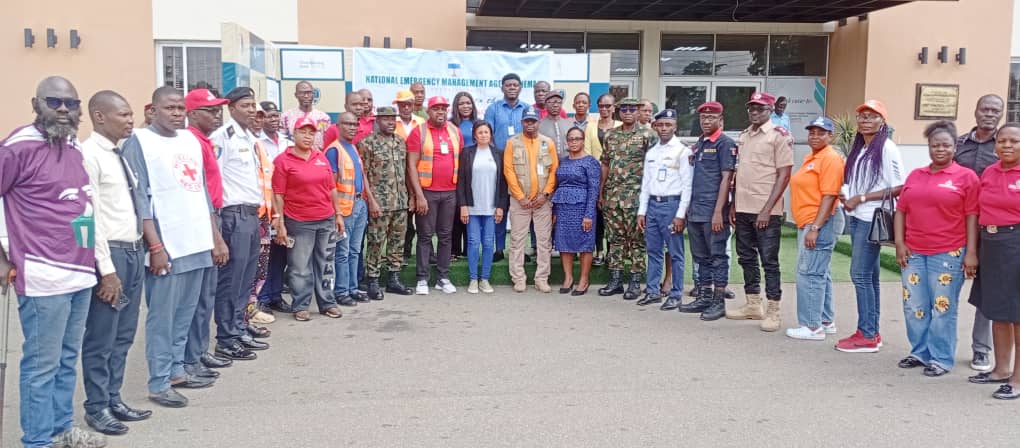By Ighomuaye Lucky. O
The National Emergency Management Agency (NEMA), said as part of its flood Early Warning System, the agency has pinpointed disaster risk management implications and mitigation strategies for communication to communities at risk during the rainy season.
She said the agency also has produced Vulnerability Maps for all communities at risk of flood across the country to serve as tools to guide governments at all levels to develop risk reduction measures to avert disaster losses during the year
The Director General of the agency, Zubaida Umar revealed this while delivering his keynote address during a Stakeholders Engagement on 2025 National Preparedness and Response Campaign (NPRC) on Flood Disaster and Related Hazards held in Benin City.
Umar also emphasized that public and private institutions, humanitarian, nongovernmental organizations, school children and youth organizations are expected to leverage on these early warning tools to support the efforts of NEMA and other government institutions.
Umar added that some of the disaster risk management implications identified by NEMA include: delayed onset of the rains in some states of the federation, earlier than normal cessation of rains, delayed cessation, shorter than normal growing season, above normal rainfall, severe dry spells (of up 21 days in some states) end warmer than long term average temperature regimes.
She opined that all these identified implications are expected to have significant impacts on socio-economic sectors including disaster management, healthcare, rain-fed agriculture, transportation, energy, telecommunication, water supply, power generation, education, security, environment and general wellbeing of the populace.
The NEMA boss said consequently, the agency has also developed disaster mitigation strategies which include capacity building of local emergency responders, simulation exercises, rain water harvesting, adherence to predicted rainfall onset before planting by farmers, irrigation as alternative source water for agriculture, vaccination of livestock, effective contingency prepositioning of basic family needs and risk transfer where necessary.
She said others include; desilting of drainages and natural waterways, integrity test for critical infrastructure, developing of evacuation plans for anticipated emergencies, strengthening community-based information sharing and increased safety and security surveillance in identified vulnerable communities.
She said beyond today’s stakeholders’ engagement, teams will visit communities at risk of floods to interact with the people and take the early warning message to the grassroots with the support of SEMAs, LEMCs and community volunteers.
On the part of the Head of Operations, NEMA, Benin, Kenoma Ojuederie, the gathering underscores the collective commitment to strengthening the resilience of communities in Edo State and across Nigeria in the face of increasingly frequent and devastating natural disasters, particularly flooding.
He said we are also all aware that flooding has become a significant threat to many of our communities, causing loss of life, damage to properties, and disruption to livelihoods and that is why, the agency, in line with its mandate to coordinate disaster management across the country, has been working tirelessly to enhance preparedness, response, and mitigation strategies.
He said however, the agency understands that no response effort is complete without the active participation and collaboration of all stakeholders—local communities, ‘government agencies, civil society, and the private sector, thus, the collaboration.
For the Edo Civil Society Organizations (EDOCSO), represented by its Coordinator General, Leftist Omobude Agho, he decried the act of incessant felling of trees without a replacement.
He said such trees should have served as windbreakers if they were not cut down.
Agho also said the idea of flooring ones compound with concrete should be discouraged because should there be rain, the water can’t sink to the ground rather it will finds its way to the already blocked drainage thereby leading to increase flooding in the area or community.




